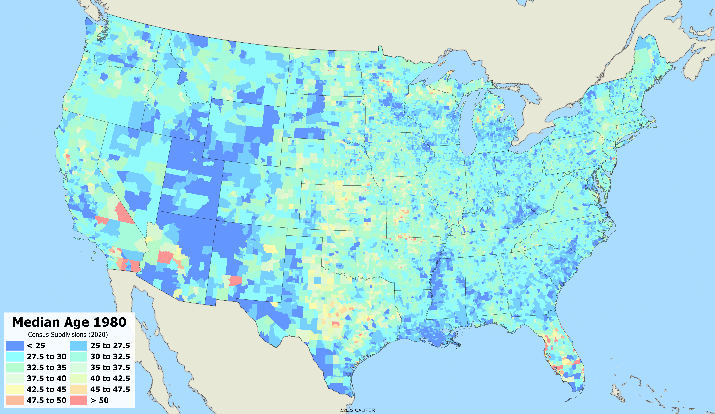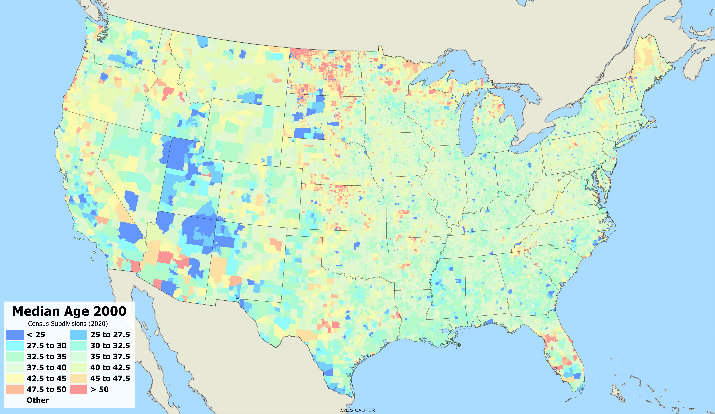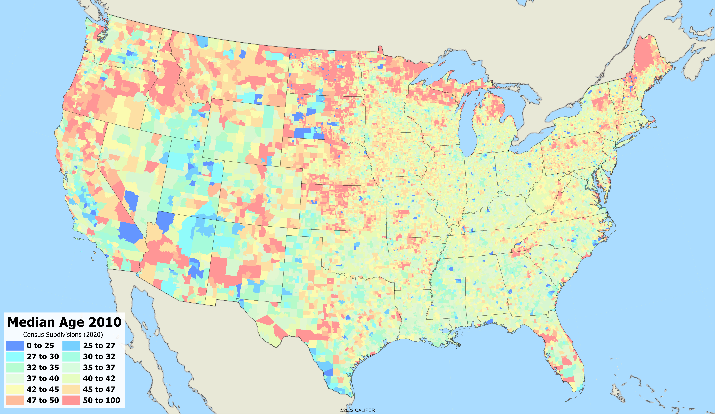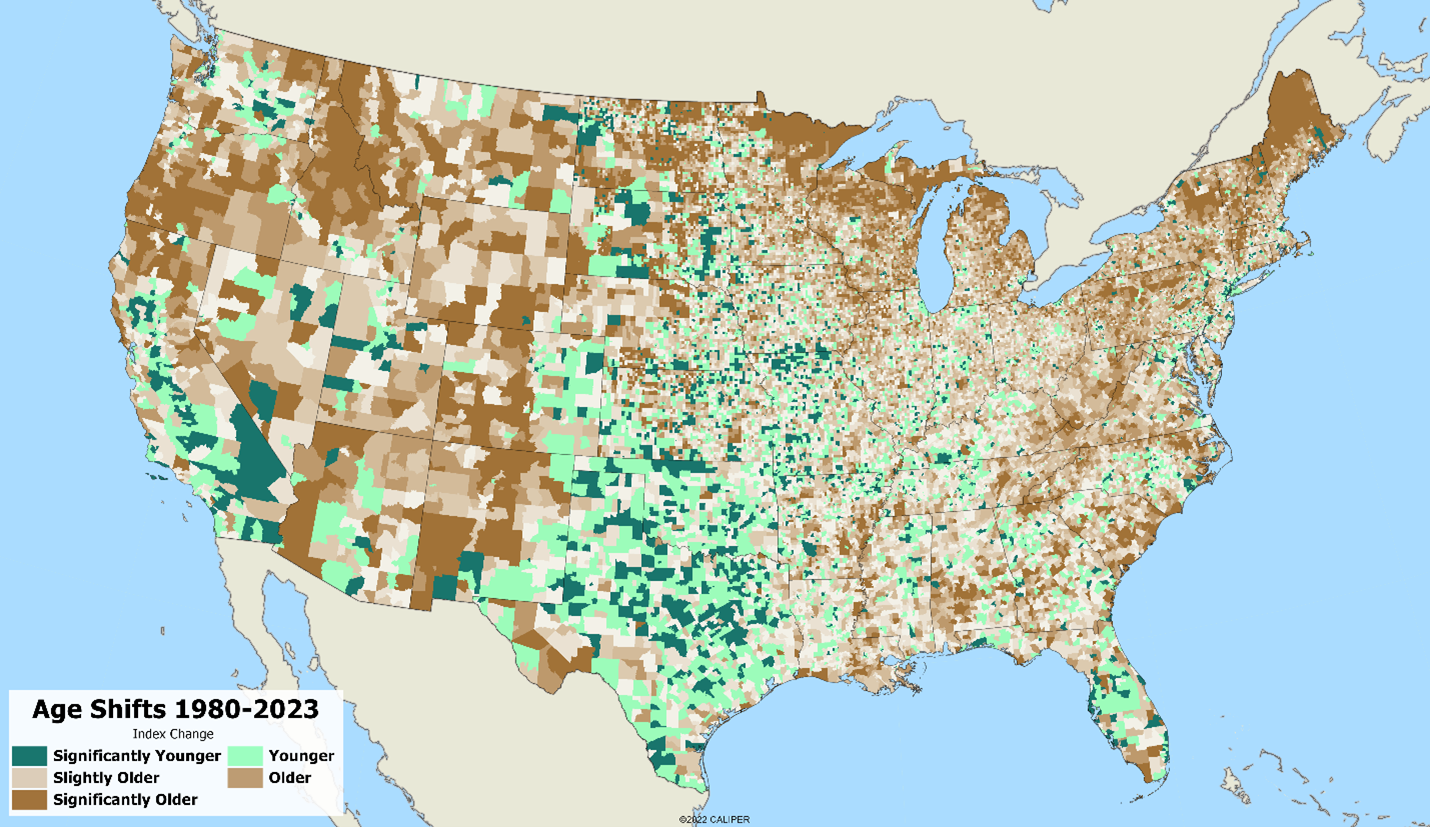Over the past several decades, the median age of the population has been steadily rising from 29.3 in 1980 to 37.8 in 2023. People are waiting longer to start families and having fewer children. The impacts of this are well known: the stress on Social Security and Medicare, the closing of public schools, labor force issues and so on. At the same time, we are reading about changes in migration patterns, mainly the losses of population in California, Illinois, and New York as people are increasingly moving to Texas, Florida and much of the southeast. With our own Michael Christenson moving from Wisconsin to Florida, we started asking some questions about the spatial patterns of aging: what areas are getting relatively younger?
We began by mapping median age at the county subdivision level from 1980 to the present, using historical data recast on current boundaries. The aging of the population is apparent in the sequence of maps:





In 1980, the older areas of the country were in Florida, the Palm Springs area of California, and much of the rural Great Plains from the Dakotas to Texas. While the general aging of the population can be clearly seen in the shift from blue to red on the maps, the patterns are by no means uniform.
We indexed the 1980 and 2023 median age against the national average, which allows us to easily show the relative change over time. The map below holds some surprises.

The map shows that many of the areas with relatively younger populations were in fact among the older areas in 1980; much of Florida, the central valley of California, and the plains from Texas to Canada. In Florida, many cities –such as Miami Beach and Aventura in the Miami area – have been transformed from sleepy retirement towns where the median age was nearly 60 to be younger than the national average. The influx of younger people in the Dakotas, largely because of high wage oil and gas sector expansion, is quite surprising given that the northern plains have been depopulating for decades.
At the same time, much of the mountain west has become significantly older as senior households have left the high cost of urban California for lower cost areas like Idaho and Utah. In the east, the northern fringe has become steadily older, as has the population of much of Appalachia. Growth areas in the southeast extend beyond Nashville, Charlotte, and Atlanta to include many smaller urban areas which have seen a revitalization in recent years.
As with most things demographic, national statistics often mask substantial regional variation that may present businesses with opportunity, and that opportunity is easily overlooked without an appropriate spatial context. Geography is really where its at.


This is VERY GOOD stuff!